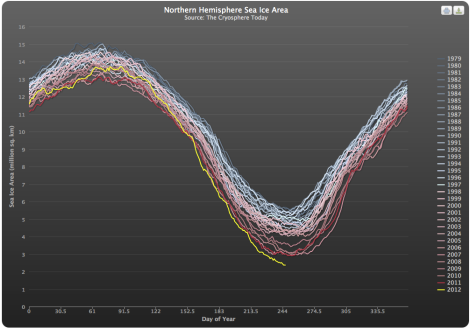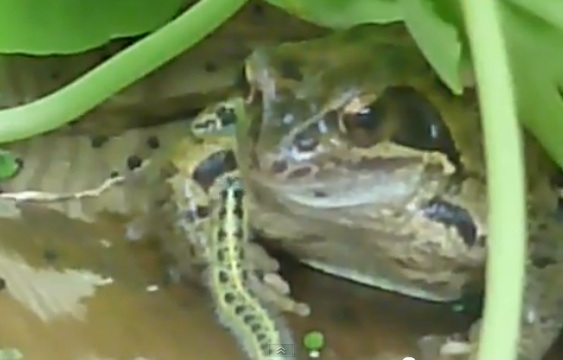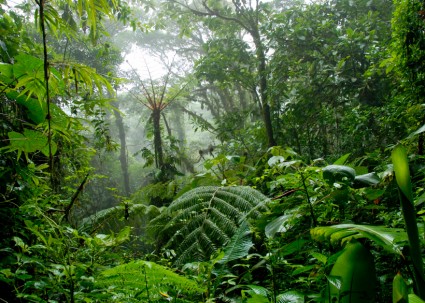Two updates on how the world is turning inside out, basically.

What a rainforest looks like, ideally.
The Amazon is getting drier
From Agence France-Presse:
Deforestation may cause rainfall in the Amazonian basin to decline disastrously, British scientists said in a study published on Wednesday by the journal Nature.
Rainfall across the vast basin could lessen by 12 percent during wet seasons and 21 percent during dry seasons, potentially inflicting astronomical costs on farmers and reducing hydro-electricity output from receding river flows.
Plants take in water at the root, then release a small amount of moisture into the air. On a small scale, that water vapor is tiny. Over acres of tropical forest, it adds a huge amount to atmospheric moisture, contributing to rainfall.
Rampant deforestation in the Amazon has slowed over the last few years, but recent political changes and the long-term impacts of climate change could reverse that trend.
The Arctic is getting wetter
… and that could speed up climate change. From the University of Alaska, Fairbanks:
Increased precipitation and river discharge in the Arctic has the potential to speed climate change, according to the results of a study led by Xiangdong Zhang, a scientist at the University of Alaska Fairbanks International Arctic Research Center. …
Zhang and his co-authors—including IARC colleague Igor Polyakov—looked at water cycles in the Ob, Lena and Yenesei River drainages in the Eurasian Arctic during the last six decades. They found that atmospheric moisture into the areas increased by an average of 2.6 percent per decade and, consequently, river discharge increased at a rate of nearly 2 percent per decade. That means the three rivers today are dumping almost 39 cubic miles more fresh water into the Arctic Ocean per year than they did in the 1940s.
Their findings are important because studies have suggested that increased air moisture and precipitation, and the resulting increase in river discharge into the Arctic Ocean, can lower salinity and cause warmer surface temperatures, as well as create weaker water circulation in the Atlantic Ocean. Those things in turn can affect multiple biological and weather systems, as well as things like sea ice and coastal erosion.
Speaking of Arctic sea ice, total coverage today is at a new all-time low, breaking a record set yesterday, which broke the record set the day before that.

Keep an eye on that yellow line. (Graph via Cryosphere Today. Click to embiggen.)
It’s going to be weird trying to explain to our kids and our grandkids that the Arctic used to be a desert that saw little precipitation and was covered with ice, while the Amazon was a lush, verdant rainforest. Of course, it will kill time during that long drive to the Thunderdome.




